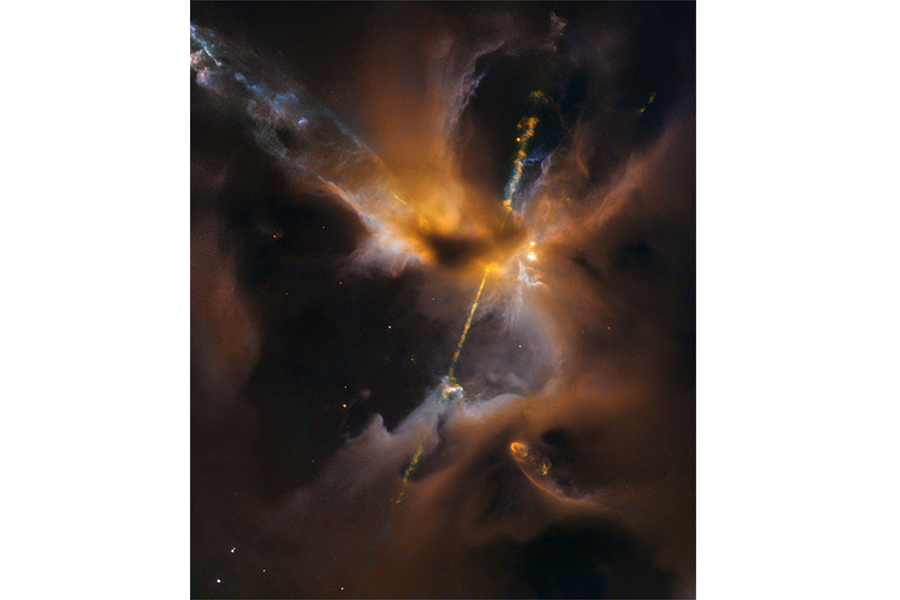Newborn star shoots 'lightsaber' into space. A cosmic nod to Star Wars?
Loading...
Could Thursday’s Hubble Space Telescope image, featuring a “double-bladed lightsaber” shooting through a “dark Jedi-like cloak of dust,” be a cosmic nod to the highly anticipated release of “Star Wars Episode VII: The Force Awakens”?
Probably not.
But according to Hubble’s announcement, unabashedly strewn with "Star Wars" references, the stream of light is coming from our own galaxy, 1,350 light-years away.
The telescope, which is operated by NASA and the European Space Agency, shot the image in infrared light, which allowed it to capture a clear picture through the gas and dust obstructing the fledgling star.
The light stream that’s visible, which the Hubble press release likens to Darth Maul’s double-bladed lightsaber from the 1999 Star Wars installment, “The Phantom Menace,” is actually two streams shooting out from opposite ends of a newly formed star, which in the image is hidden in the center by clouds of dust and gas.
The light beam is located in the Orion Complex, which is a part of the Orion constellation, a fertile region for forming stars.
Here, embryonic stars, called protostars, gather disks of gas that have the potential to turn into solar systems like our own. The growing stars, with a “Jabba-like appetite” explains the team behind Hubble, feeds off the gas. When enough gas has been gathered, the star awakens, ejecting jets of gas from its poles. As the jets travel at high speeds in separate directions, the friction heats the gas surrounding the jets to thousands of degrees.
“Their effect on their environment demonstrates the true power of the Dark Side with a blast stronger than one from a fully armed and operational Death Star battle station,” the press release reads.
These interstellar light beams are called Herbig–Haro (HH) objects. The one shown in today’s Hubble image is dubbed HH 24.







